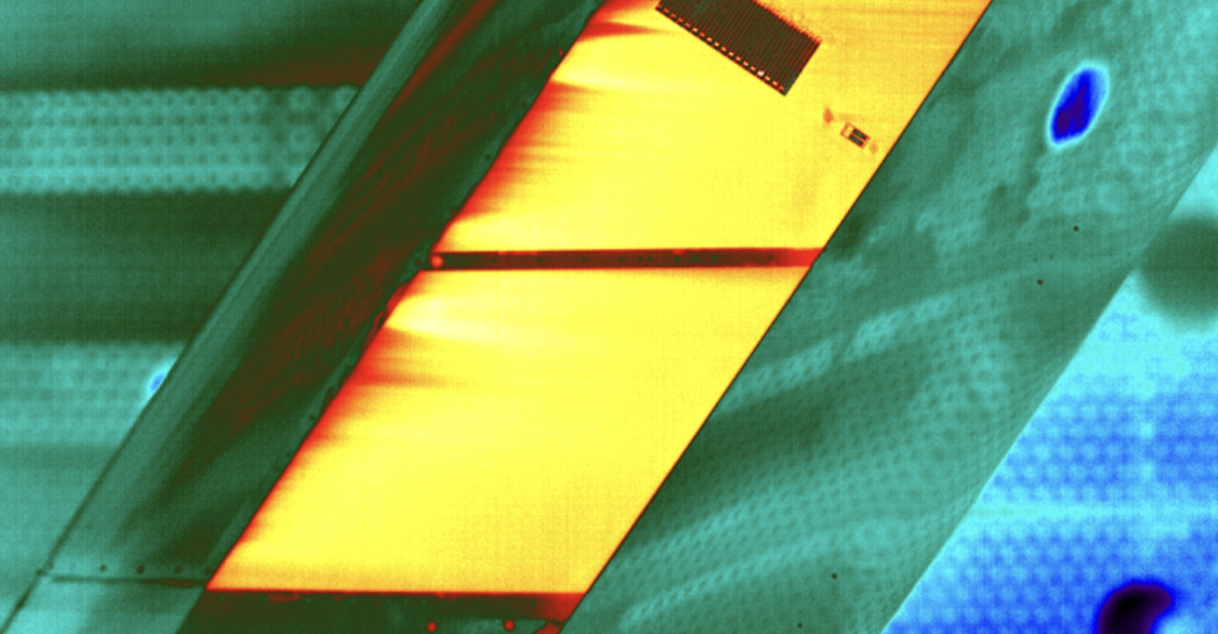
Thermal imaging at Mach 1.4 - improving aircraft performance at the Aircraft Research Association
Aircraft Research Association (ARA) is a UK-based aerodynamics research institute working on innovative projects for the world’s major commercial aircraft and defence manufacturers. It recently set out to test a long-term theory that could make long-haul flights more efficient as countries move towards net zero.
Using Teledyne FLIR thermal imaging cameras during testing, ARA proved its theory correct. The research will have a direct impact on increasing flight efficiency on future aeroplane designs.
Using thermal imaging to visualise airflow
ARA wanted to test out its Hybrid Laminar Flow Control theory, which proposes that creating a porous section at the front of the aeroplane wing will control the point of transition of airflow to reduce the effect of turbulence and improve fuel consumption.
ARA operates a large scale transonic wind tunnel, essentially a high speed wind tunnel, at speeds up to Mach 1.4 (1000 mph) for testing aeroplane models. Due to the turbulence that air creates at such high speeds, the point of transition for airflow changes by less than one degree centigrade, so exceptionally accurate thermal measurement was needed.
Previously, it used hot film gauges, however, these only measured the temperature drop – it was not visible and they interfered with the surface of the wing by being glued on. The Teledyne FLIR T1K camera allowed ARA to visualise what was happening with airflow without influencing the aerodynamics. It ensured greater accuracy during testing and on identifying the point of transition.

Working in partnership to achieve results
To implement the technology and set up the test, ARA needed an integration partner. It selected Thermal Vision Research, a UK-based integrator partner for Teledyne FLIR, who loaned the Teledyne FLIR T1K camera to ARA for its research.
ARA was already using two Teledyne FLIR A655C thermal imaging cameras in its wind tunnel to test temperature changes, but when an opportunity arose to develop its testing by using a more advanced camera to see how the results would differ – it seemed like the perfect fit.
Neil Stokes, Optical Measurements Systems at ARA said: “Our relationship with Matthew Clavey at Thermal Vision Research goes back a long way. We’ve been looking at thermal imaging across the site for various things. I’ve had demonstrations from a couple of companies but a lot is based on experience and trust with a particular distributor or supplier. Matthew was really helpful so he loaned the camera to us to try for a week. He always gives us the right technical answers whenever we had a question.
“If I’m honest, I think it was the service and support from Matthew that sold us down the Teledyne FLIR route. The support from a local distributor really was key – having someone at the end of the phone or willing to visit and talk us through things is really helpful.”
Improving wing design for better aerodynamic performance
Before completing the test, ARA ran trials to ensure that the handheld T1K could be controlled remotely over a distance by installing it in the tunnel. The ARA team needed to control the camera from about 30 metres away so they could retrieve the images live on a computer, allowing them to see the airflow as it happened. As the tunnel is running, it can cause vibrations which could cause the cameras to go out of focus so being able to see the images live means they can correct any issues like this.
Using the Teledyne FLIR T1K camera enabled greater accuracy during the testing and improved accuracy on identifying the point of transition. The Teledyne FLIR 655 is slightly more sensitive than the T1K but it didn’t lose anything with the loss of sensitivity – it just gained improved resolution. It gave better accuracy for proving the theory correct.
The T1K camera uses FLIR Vision Processing which combines HD resolution, MSX®, and UltraMax® image enhancement to produce brilliant thermal images with up to 3.1 million pixels.
The Teledyne FLIR T1K allowed ARA to prove the Hybrid Laminar Flow Control theory is true within a safe and controlled environment. It is now able to offer the T1K set up in the windtunnel as a concept to customers for improving wing design for better aerodynamic performance.
Click here to download the article
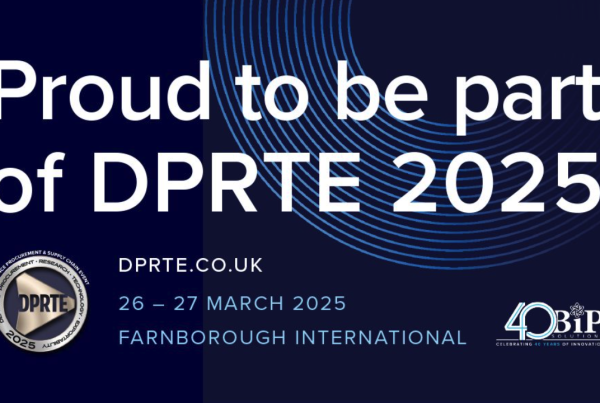 Online Shop Premium X-Series Advanced A-Series Highend UnCooled Buy Online Entry Level Buy Online Software Buy Online FLIR attending DPRTE with Thermal Vision...
Online Shop Premium X-Series Advanced A-Series Highend UnCooled Buy Online Entry Level Buy Online Software Buy Online FLIR attending DPRTE with Thermal Vision...
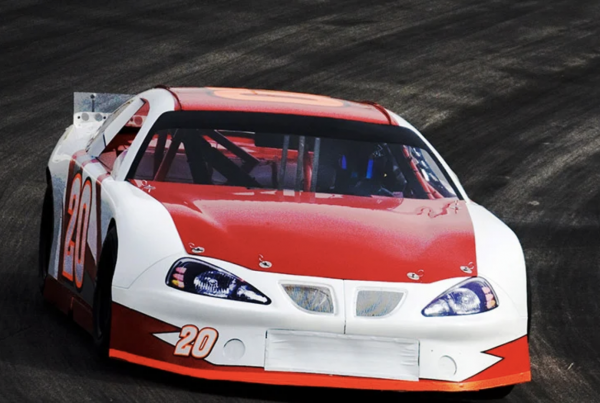 Online Shop Premium X-Series Advanced A-Series Highend UnCooled Buy Online Entry Level Buy Online Software Buy Online FLIR Systems R&D cameras contribute to aerodynamic research...
Online Shop Premium X-Series Advanced A-Series Highend UnCooled Buy Online Entry Level Buy Online Software Buy Online FLIR Systems R&D cameras contribute to aerodynamic research...
 Online Shop Premium X-Series Advanced A-Series Highend UnCooled Buy Online Entry Level Buy Online Software Buy Online Configuring computer and network adapters for Giga Ethernet best...
Online Shop Premium X-Series Advanced A-Series Highend UnCooled Buy Online Entry Level Buy Online Software Buy Online Configuring computer and network adapters for Giga Ethernet best...
 Online Shop Premium X-Series Advanced A-Series Highend UnCooled Buy Online Entry Level Buy Online Software Buy Online [/vc_column] GigE Optimizing image transfer GigE Optimizing image transfer Updated Date 20/12/2024 07.01...
Online Shop Premium X-Series Advanced A-Series Highend UnCooled Buy Online Entry Level Buy Online Software Buy Online [/vc_column] GigE Optimizing image transfer GigE Optimizing image transfer Updated Date 20/12/2024 07.01...
 Online Shop Premium X-Series Advanced A-Series Highend UnCooled Buy Online Entry Level Buy Online Software FLIR Cameras - Which SDK...
Online Shop Premium X-Series Advanced A-Series Highend UnCooled Buy Online Entry Level Buy Online Software FLIR Cameras - Which SDK...
 Getting started with the MATLAB Image Acquisition Toolbox using infrared cameras Getting started with the MATLAB Image Acquisition Toolbox using infrared cameras Updated Date 20/12/2024 07.01 PM How do I start using the MATLAB Image Acquisition...
Getting started with the MATLAB Image Acquisition Toolbox using infrared cameras Getting started with the MATLAB Image Acquisition Toolbox using infrared cameras Updated Date 20/12/2024 07.01 PM How do I start using the MATLAB Image Acquisition...
 FLIR Science File SDK for MatLab - Getting started FLIR Science File SDK for MatLab - Getting started Updated Date 20/12/2024 07.01 PM How can I install the Science File SDK for MatLab? How do...
FLIR Science File SDK for MatLab - Getting started FLIR Science File SDK for MatLab - Getting started Updated Date 20/12/2024 07.01 PM How can I install the Science File SDK for MatLab? How do...
 High-Resolution FLIR Camera Brings Science to the Racing Track FLIR Research Studio - Compared to Thermal Studio Updated Date 05/09/2024 03.33 PM Should I buy a Research Studio or a Thermal Studio? Which edition is right...
High-Resolution FLIR Camera Brings Science to the Racing Track FLIR Research Studio - Compared to Thermal Studio Updated Date 05/09/2024 03.33 PM Should I buy a Research Studio or a Thermal Studio? Which edition is right...
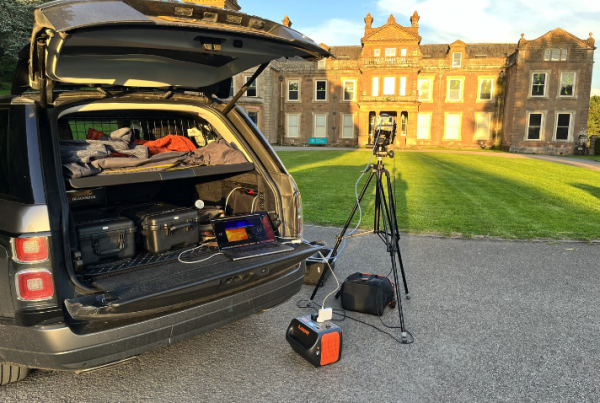 @ Evenings onsite filming bats I am raw html block.Click edit button to change this html Click here to download the article
@ Evenings onsite filming bats I am raw html block.Click edit button to change this html Click here to download the article
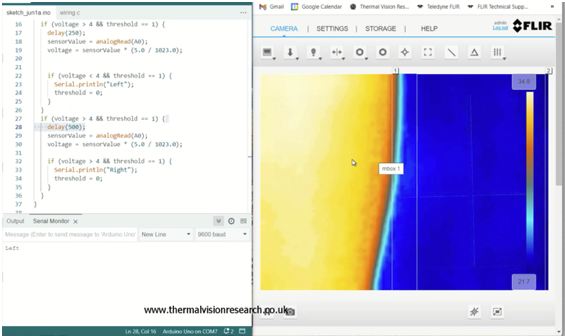 How to virtually increase the number of digital outputs on a FLIR AX8 thermal camera Application A customer using an AX8 wanted to trigger on the digital output if either...
How to virtually increase the number of digital outputs on a FLIR AX8 thermal camera Application A customer using an AX8 wanted to trigger on the digital output if either...
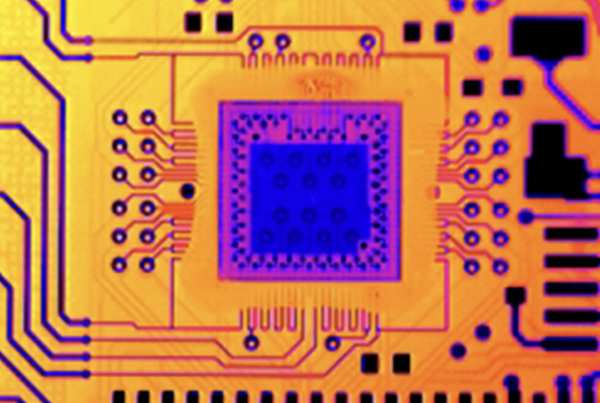 Contact vs. Non-Contact Testing As electronic circuit boards and components get smaller and more powerful, inherent heat can cause significant damage. Infrared thermography can identify hot spots, allowing for improved...
Contact vs. Non-Contact Testing As electronic circuit boards and components get smaller and more powerful, inherent heat can cause significant damage. Infrared thermography can identify hot spots, allowing for improved...
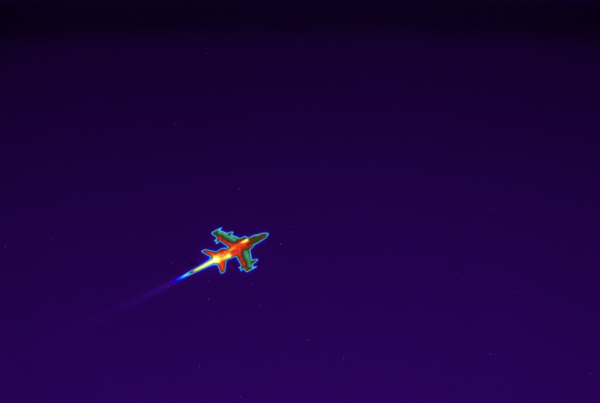 The FLIR RS8500 high-speed camera has been selected for integration into the NEOS optical tracking system from Nurjana Technologies. Thanks to the camera’s superior resolution and measurement accuracy, the Italian...
The FLIR RS8500 high-speed camera has been selected for integration into the NEOS optical tracking system from Nurjana Technologies. Thanks to the camera’s superior resolution and measurement accuracy, the Italian...
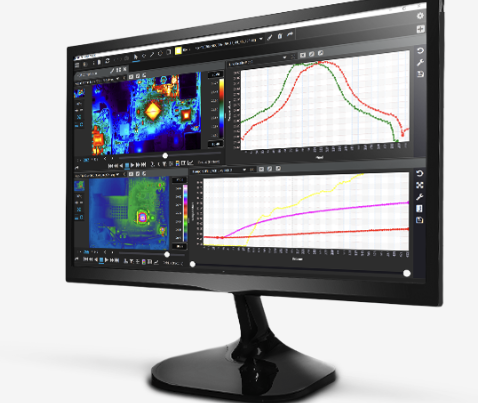 Research Studio 3.0 LAUNCHED April 2023 FLIR Research Studio is designed to work the way you do, providing robust recording and analysis capabilities with an intuitive user interface for a...
Research Studio 3.0 LAUNCHED April 2023 FLIR Research Studio is designed to work the way you do, providing robust recording and analysis capabilities with an intuitive user interface for a...
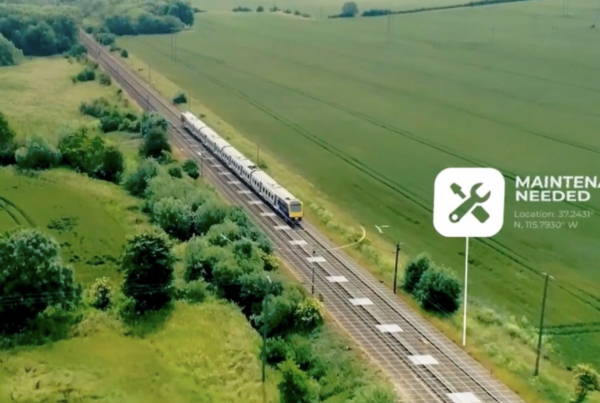 On the right track: UK rail operator trials ‘Intelligent Train’ prototype to transform transport network Rail operator Northern is trialing a new state-of-the-art train to help radically improve infrastructure issues...
On the right track: UK rail operator trials ‘Intelligent Train’ prototype to transform transport network Rail operator Northern is trialing a new state-of-the-art train to help radically improve infrastructure issues...
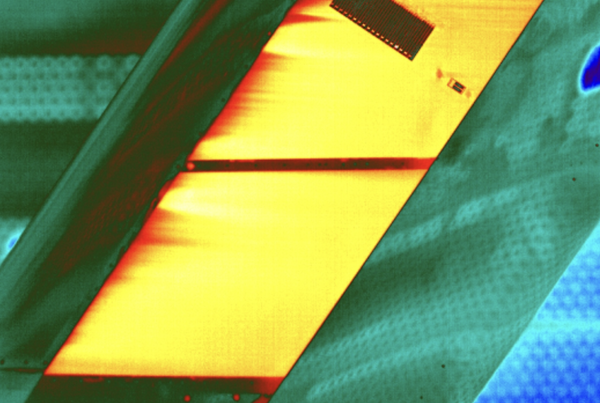 Thermal imaging at Mach 1.4 - improving aircraft performance at the Aircraft Research Association Aircraft Research Association (ARA) is a UK-based aerodynamics research institute working on innovative projects for the...
Thermal imaging at Mach 1.4 - improving aircraft performance at the Aircraft Research Association Aircraft Research Association (ARA) is a UK-based aerodynamics research institute working on innovative projects for the...
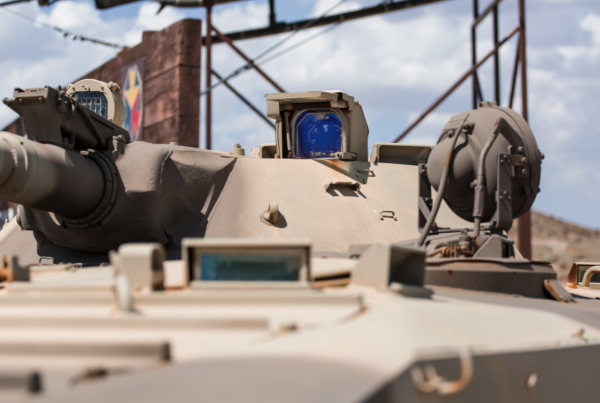 Helping QinetiQ develop next-gen military camouflage and stealth technology QinetiQ is a British multinational defence technology company and a world-leading provider of unmanned air, land and surface targets for live-fire...
Helping QinetiQ develop next-gen military camouflage and stealth technology QinetiQ is a British multinational defence technology company and a world-leading provider of unmanned air, land and surface targets for live-fire...
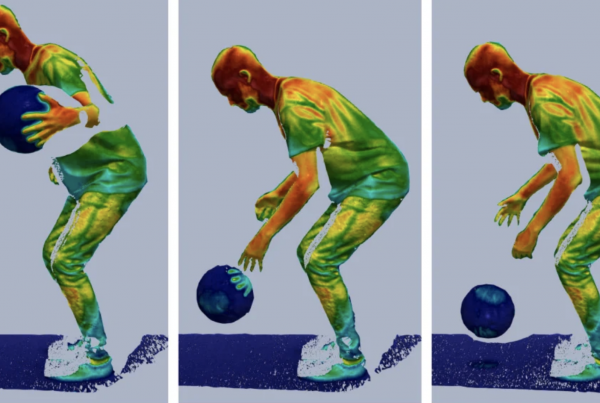 High Speed Thermography Combines Dynamic Spatial 3D and Thermal Data Researchers at the Fraunhofer IOF in Jena have developed a camera system for the three-dimensional detection of objects with two...
High Speed Thermography Combines Dynamic Spatial 3D and Thermal Data Researchers at the Fraunhofer IOF in Jena have developed a camera system for the three-dimensional detection of objects with two...
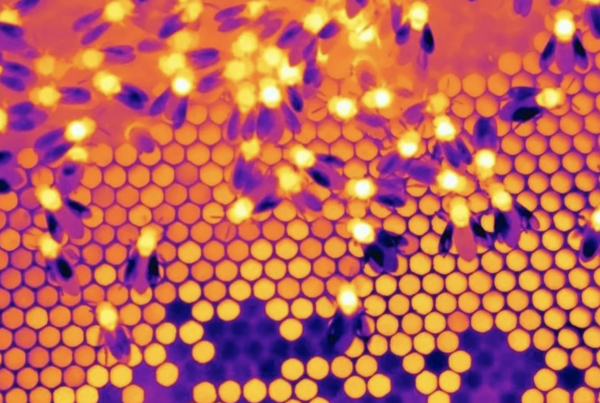 Saving Beehives With FLIR Thermal Cameras Beekeepers are increasingly turning to thermal imaging to help them care for their bees, especially during winter. Master beekeeper Rusty Burlew, who writes and...
Saving Beehives With FLIR Thermal Cameras Beekeepers are increasingly turning to thermal imaging to help them care for their bees, especially during winter. Master beekeeper Rusty Burlew, who writes and...
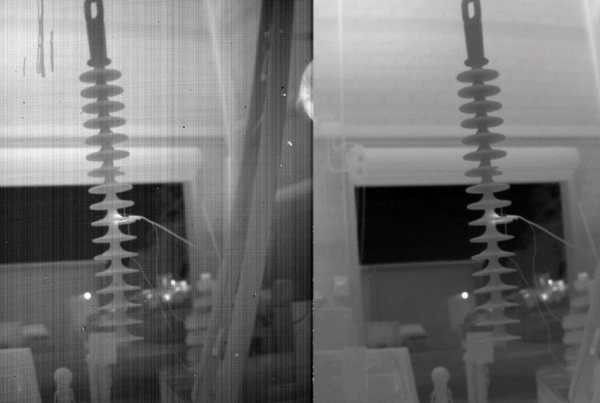 What is a Non-Uniformity Correction (NUC)? If you’re wondering why your thermal image sometimes freezes and the camera makes a clicking noise, there’s no need to be alarmed, it’s performing...
What is a Non-Uniformity Correction (NUC)? If you’re wondering why your thermal image sometimes freezes and the camera makes a clicking noise, there’s no need to be alarmed, it’s performing...
